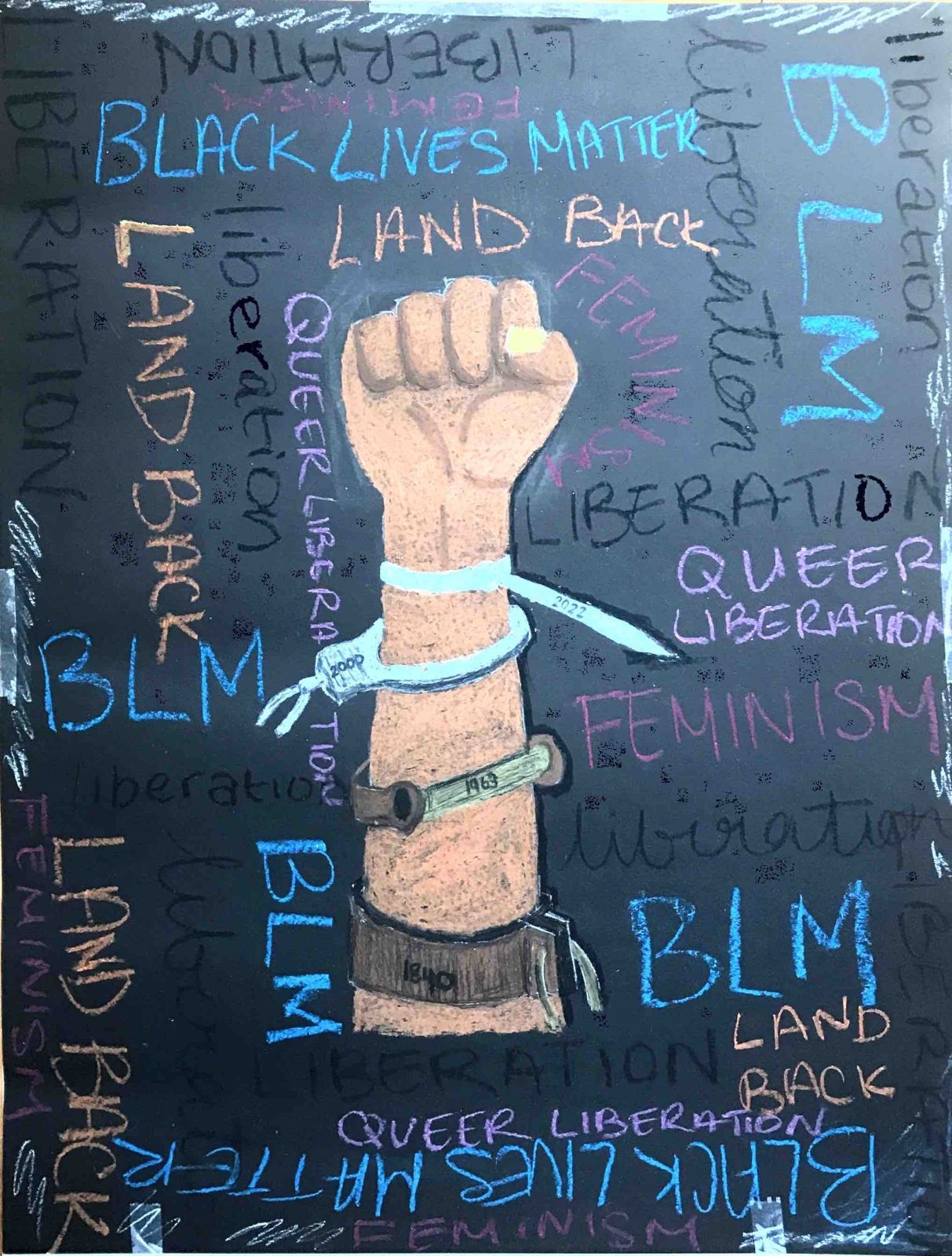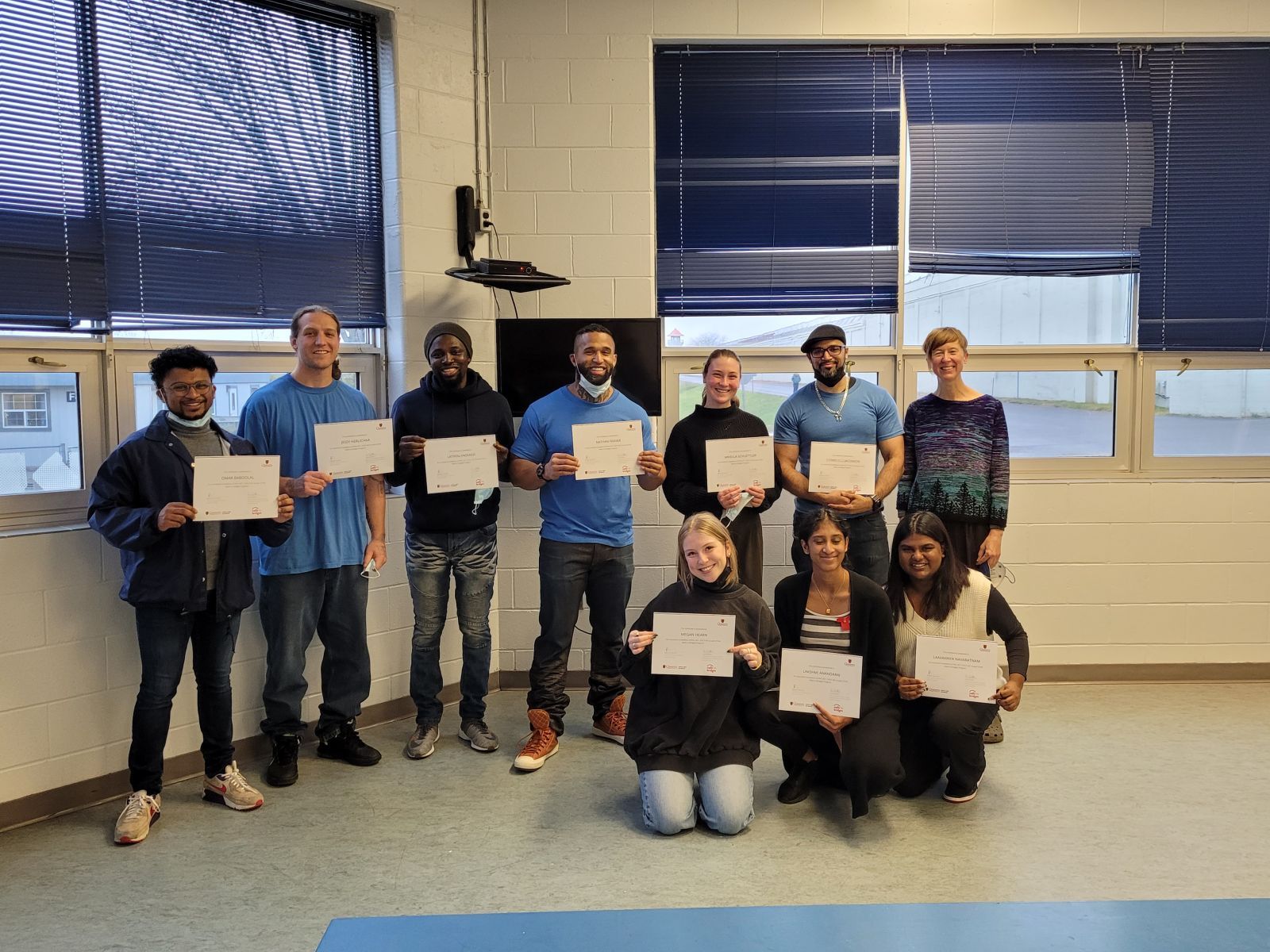
Graduating from the Walls to Bridges program were, standing (l to r): Standing: Omar Baboolal,
Jessy Herlichka, Latifou Fassassi, Nathan Fraser, Mikella Schuettler, C.J. Jacobson, and Lisa Guenther. Kneeling: Megan Hearn, Lakshmi Anandaraj, and Laavannya Navaratnam. (Photo by Lisa Guenther)
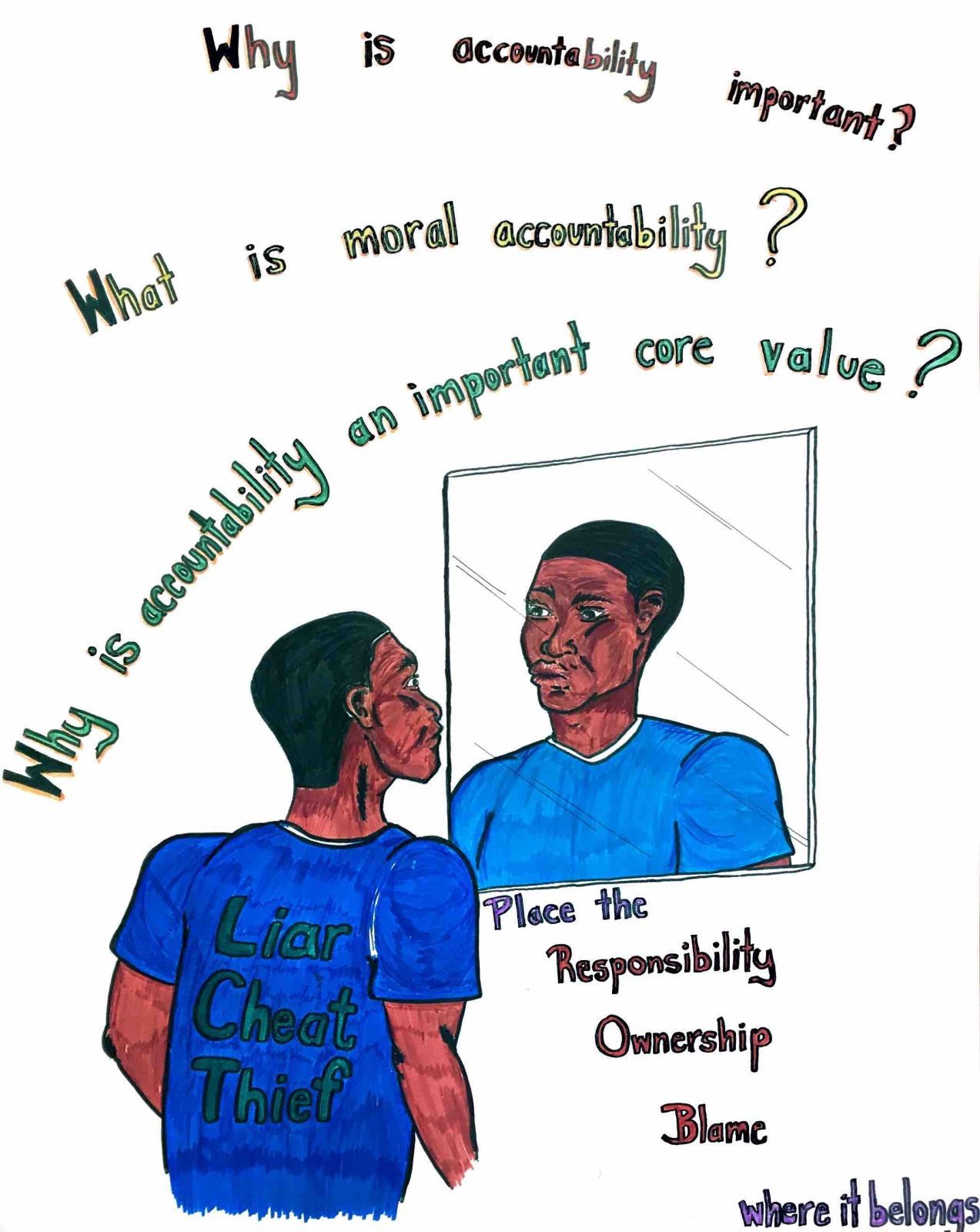
A poster created by one of the Walls to Bridges students, C. J. Jacobson
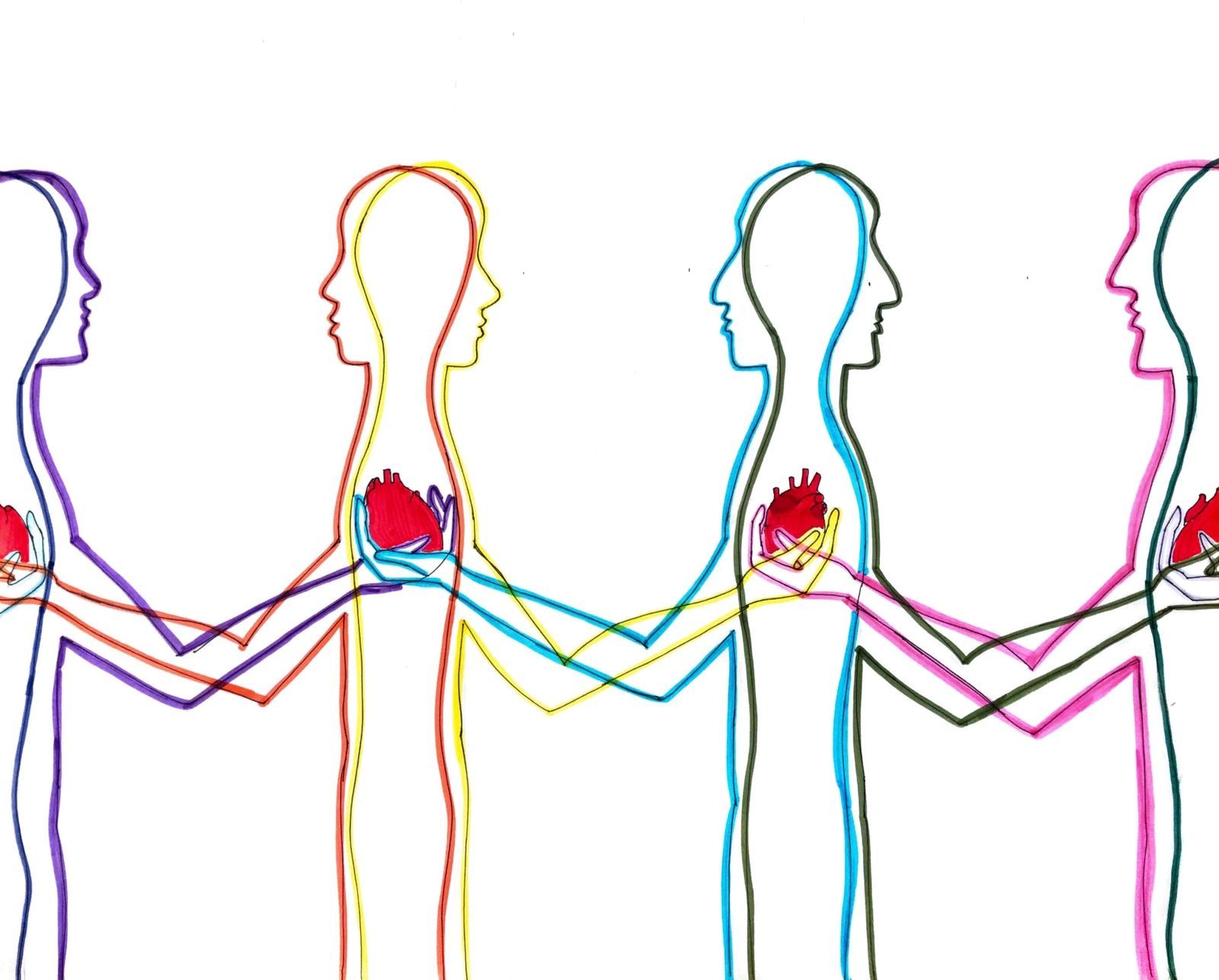
A poster created by one of the Walls to Bridges students, Lakshmi Anandaraj.
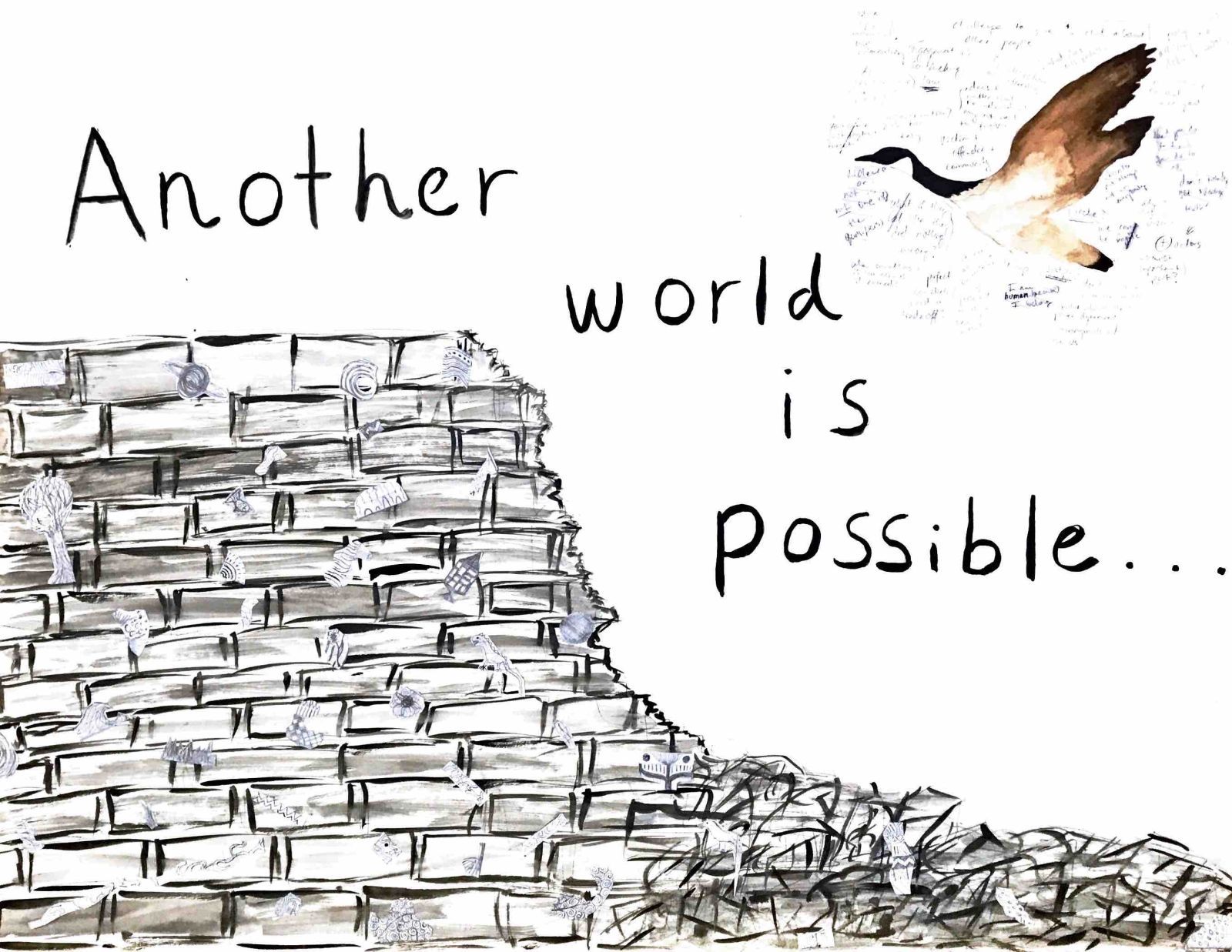
A poster created by one of the Walls to Bridges students, Mikella Schuettler.
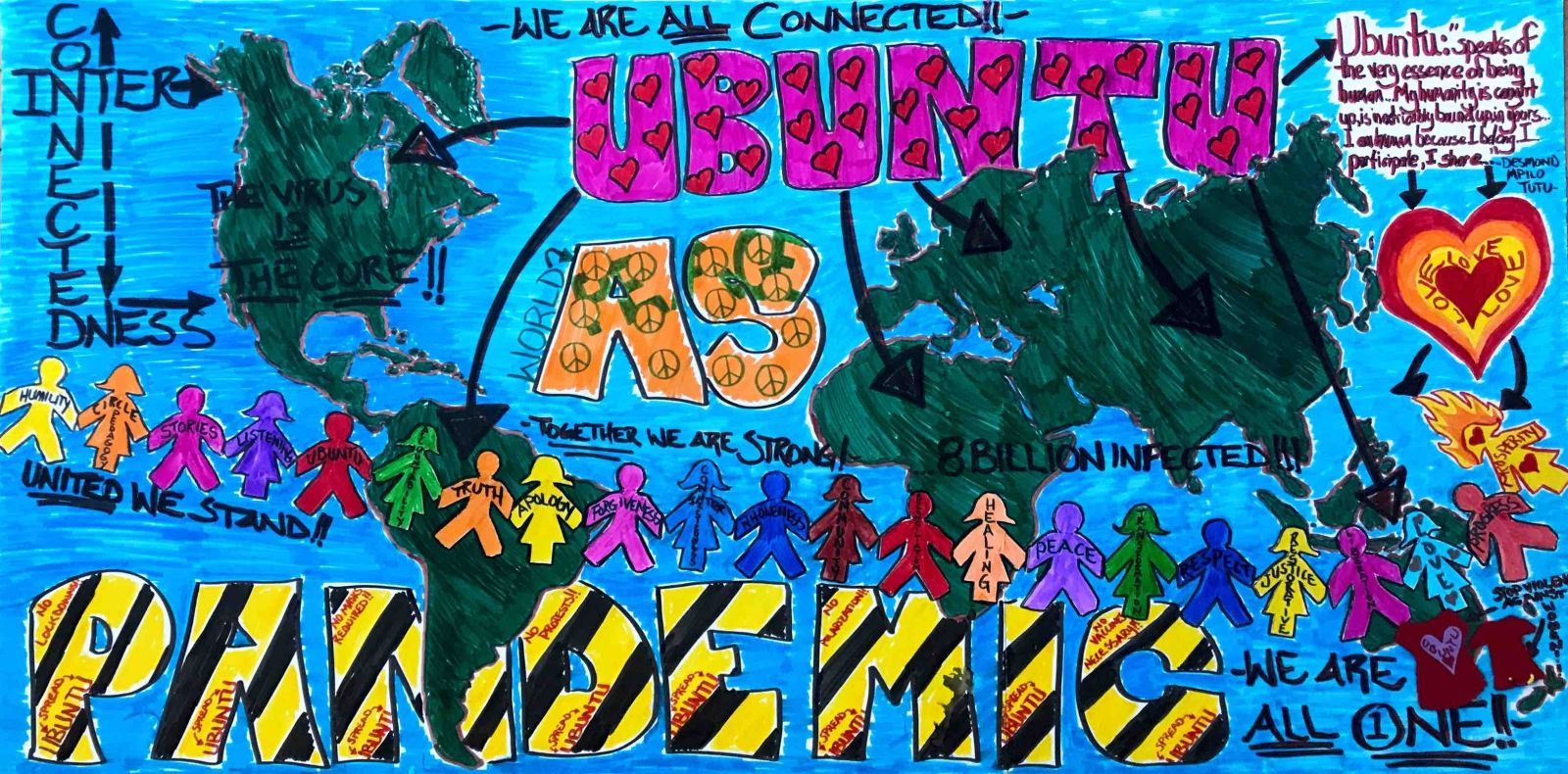
A poster created by one of the Walls to Bridges students, Nathan Fraser.
A New Beginning, a New Understanding
Walls to Bridges breaks down barriers and provides unique educational opportunities
Excitement. Pride. Understanding. Hope.
Those were just some of the emotions flowing through the common room at Collins Bay Institution during a unique graduation ceremony. Five Faculty of Arts and Science students and four currently incarcerated students celebrated completing their course on restorative justice as part of the Walls to Bridges (W2B) program.
W2B began in 2011 as a partnership between Grand Valley Institution for Women in Kitchener, Ontario and the Faculty of Social Work at Wilfrid Laurier University. The courses are university or college-based classes taught in jails, prison and community correctional settings. Students who are or have been incarcerated study together with students enrolled in university/college programs. All students who successfully complete the course receive a university/college credit.
Nicole Myers (Sociology) and Lisa Guenther (Philosophy) organized the program together, but it was cancelled the past two years because of COVID. Dr. Guenther taught the program this semester and Dr. Myers will teach the program next school year.
“This aim of this program is to build community and mutual understanding across the prison walls by learning about issues of shared concern,” says Dr. Guenther about the program. “An important principle of W2B is that students from outside the correctional system are not ‘mentoring’ or ‘helping’ or ‘working with’ incarcerated students. All participants in the class are peers.”
Graduating from the first W2B program were outside students: Laavannya Navaratnam, Megan Hearn, Omar Baboolal, Lakshmi Anandaraj, and Mikella Schuettler, along with inside students: Latifou Fassassi, Nathan Fraser, Jessy Herlichka, and C.J. Jacobson.
“This was a great educational opportunity,” says Herlichka. “I wanted to take advantage of this opportunity and hopefully provide the motivation for other guys in here that might want to take this course. It was also important to me that we were all on the same level.”
He also talked about breaking down stereotypes that all the students agreed existed to some degree.
“I knew there were eight Federal institutions in Kingston but for me they were just part of the landscape,” Schuettler says. “Now I think more critically about them and who is living inside. They are no longer just buildings; I think differently now.”
Baboolal agrees with that, adding there was no hierarchy within the course – everyone worked together, everyone was equal. When asked about the start of the program and what he felt during his initial first few classes he was very honest.
“I had a fear going in of how I would be perceived by the students inside,” he says. “I was worried about how I would fit in, so I tried to take up less space at first. Despite all that I learned a very important truth – we are all human.”
After an initial period of getting to know each other, Navaratnam says the entire course became very collaborative with all nine students working in unison. She says the entire group reached another level, becoming friends, telling stories, joking around, and learning so much from each other. “This was the best course I have taken during my academic time at Queen’s.”
The entire group also had high praise for Dr. Guenther and how she ran the class. “She didn’t just stand in front of the class and teach,” Baboolal says. “We sat in a circle and worked on projects in the class together. She also encouraged us to get involved.”
So, what does the future hold for W2B in Kingston? Fraser spoke passionately about the project and what it offers to inside students like himself. “What did this do for me? No words can describe how empowering, how life changing this was for me. I learned a lot about the differences and similarities between us and students on the outside. We got to have conversations to understand people on the outside believe in restorative justice, they want to push for restorative justice, which means a lot to me and those on the inside.
“You want to change things on the street? Change things in prisons. You leave prison bitter; you are bitter on the streets which often doesn’t end well. More opportunities are critical. We need more dialogue and hope people are listening.”
Someone who also believes in the W2B program and restorative justice is Collins Bay Institution Warden Christine Anderson. “This program is fantastic and brings hope. I look forward to more positive experiences and I’d like to bring this program next door (to Collins Bay medium and maximum security). “The inmates are always looking for more to do, ways to better themselves. It feels good to attend this graduation and celebrate them.”
To learn more, visit the Walls to Bridges website.


